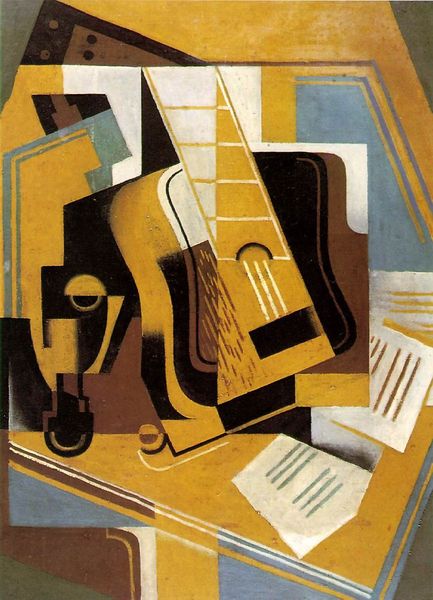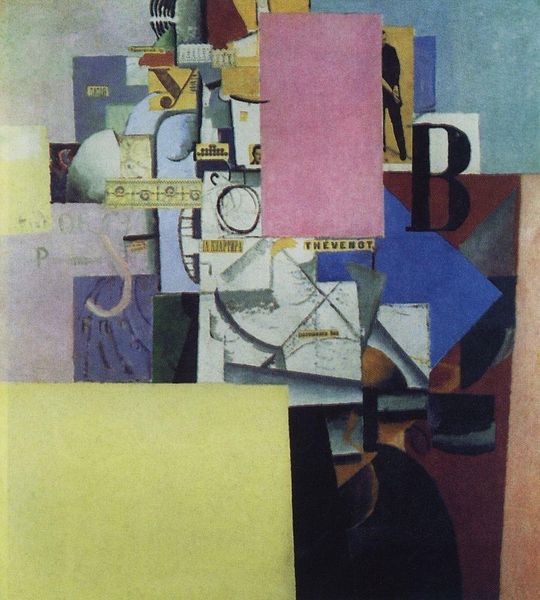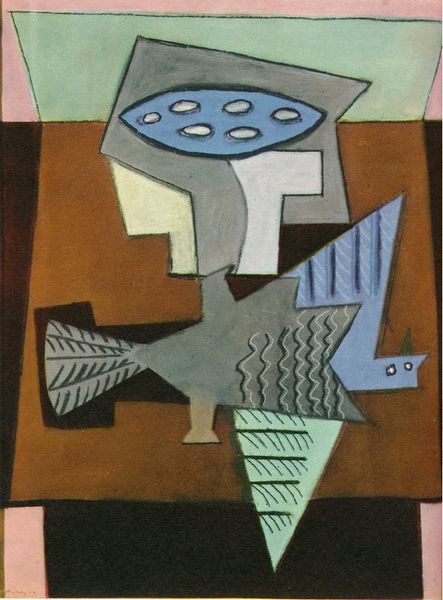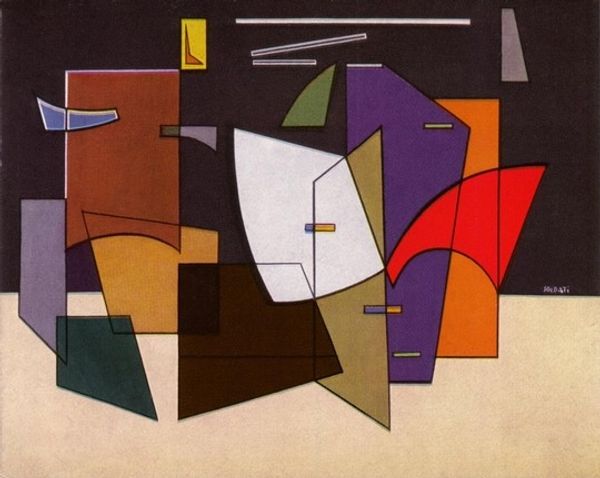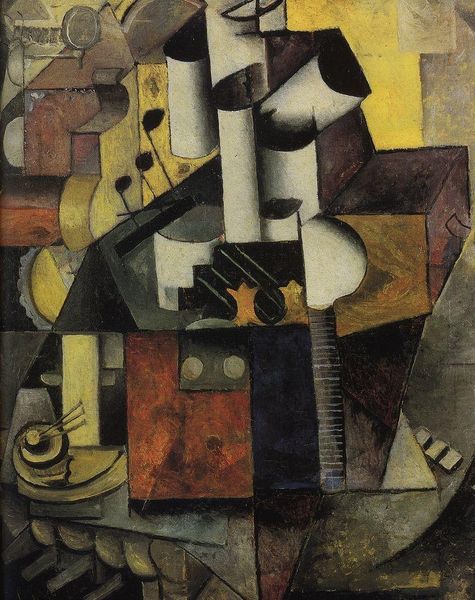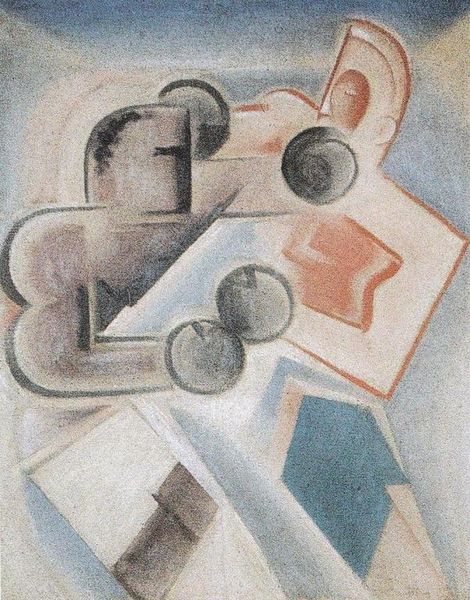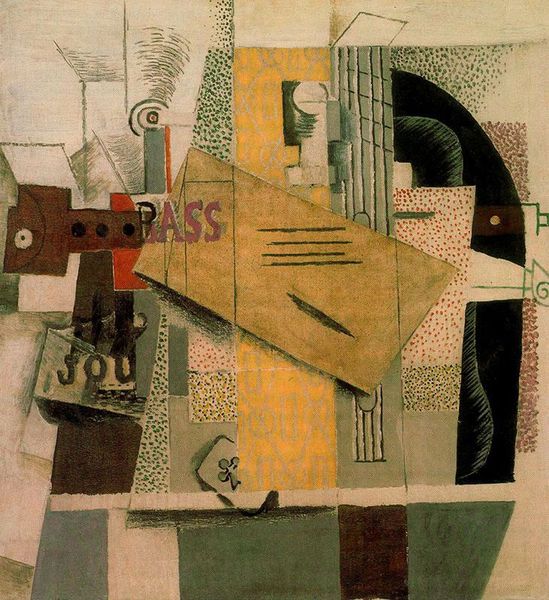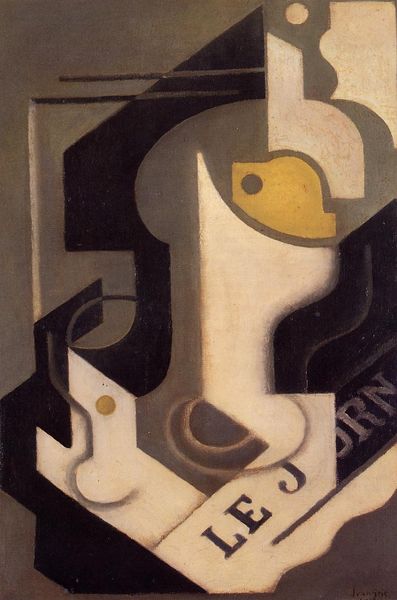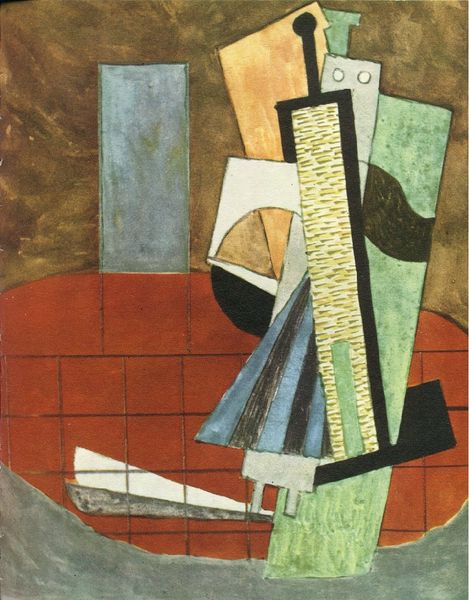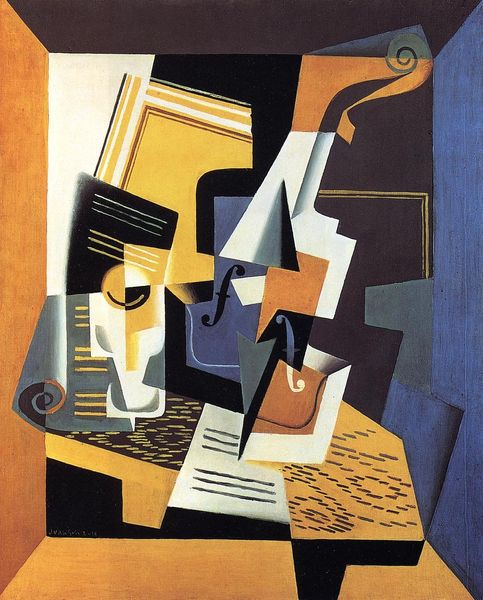
painting, oil-paint
#
cubism
#
water colours
#
painting
#
oil-paint
#
painted
#
acrylic on canvas
#
geometric
#
abstraction
Dimensions: 65.3 x 92.2 cm
Copyright: Public domain US
Editor: Here we have Pablo Picasso's "Guitar," created in 1920. It appears to be an oil painting with some mixed media elements. It is really striking how geometric and abstract the representation is, making you question what is a "guitar" supposed to look like? What do you make of this breakdown of form? Curator: From a formalist perspective, this painting offers a fascinating study in fragmentation and reconstruction. The subject, while nominally a guitar, is essentially deconstructed into geometric components. Consider the interplay of color and shape; the ochre and brown planes that define the body of the instrument are interrupted by lighter, greyish geometric fields, which lack depth. Do you notice how the flatness of the picture plane is aggressively asserted? Editor: Yes, definitely. There's a real sense that everything is being pushed forward, nothing recedes. And the different textures—some smoother, some rougher—also draw attention to the surface. Curator: Precisely. Picasso's use of color isn't mimetic but rather structurally integral. The colour enhances our understanding of shape. Notice too the wallpaper in the background which, though only representational, still provides some idea of 3-dimensionality. By breaking down familiar forms and reassembling them, is Picasso inviting us to look beyond representation and grapple with the underlying structures of reality? Editor: It seems that he almost forces us to. I came here hoping for a recognisable guitar, and now my interest in a traditional depiction is being totally overturned by a powerful visual exploration of geometry and colour. Curator: And that subversion, I believe, is precisely the intention. Through this process, we are compelled to reconsider our assumptions about perception and representation in the painted arts. Editor: It's like the painting becomes less about the thing represented, and more about the way it's represented! Curator: Precisely.
Comments
No comments
Be the first to comment and join the conversation on the ultimate creative platform.

